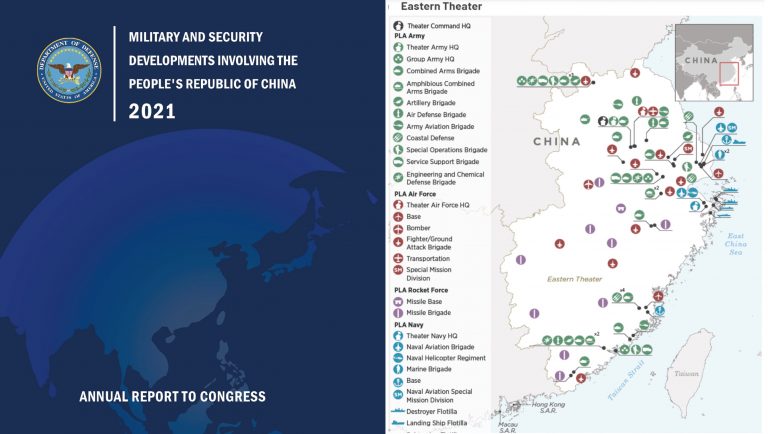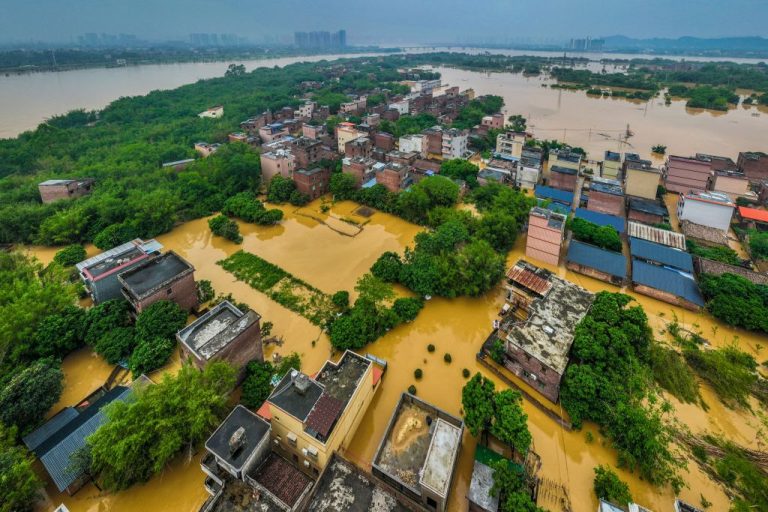Recently, the U.S. Department of Defense released its 2021 Military and Security Developments Involving the People’s Republic of China report (MSDC). The report (pdf) offers a rare elaboration of the Chinese Communist Party’s “Developments in the Security Situation in the Taiwan Strait,” specifically discussing security issues concerning the island.
The report concludes that “since 2010, the United States has announced more than $23 billion in arms sales to Taiwan. In support of these efforts, the U.S. continues to maintain the capacity to resist any resort to force or other forms of coercion that would jeopardize the security, or the social or economic system, of the people of Taiwan.”
The report gave a detailed description of the CCP’s military capabilities; the separate discussion of the Taiwan Strait situation implies that Washington seeks to deter Beijing’s military adventures.
Rising threat
As the MSDC report described, the PRC continues to signal its willingness to use military force against Taiwan. The communist People’s Liberation Army (PLA) has a range of options to coerce Taipei, based on its increasing capabilities in multiple domains.
Communist China maintains that Taiwan is a legitimate part of its territory — the island is governed as the Republic of China (ROC), which the communists expelled from mainland China in 1949. Much like the frozen conflict between South Korea and North Korea, the Chinese civil war is technically still ongoing.
Success
You are now signed up for our newsletter
Success
Check your email to complete sign up
According to the Pentagon report, PLA literature describes a “Joint Blockade Campaign” in which the PRC would employ “kinetic blockades of maritime and air traffic,” including a cut-off of Taiwan’s vital imports, to force Taiwan’s capitulation.
Large-scale missile strikes and possible seizures of Taiwan’s offshore islands would accompany the Joint Blockade in an attempt to achieve a rapid Taiwan surrender, while at the same time, posturing air and naval forces to conduct weeks or months of blockade operations if necessary.
However, the success of such action would be contingent on the non-intervention by foreign militaries, chiefly those of the United States and its regional allies.
US could ‘absolutely’ defend Taiwan
While some previous reports by the defense community have doubted the capability of U.S. forces to prevent a PLA invasion of Taiwan, America’s top general recently countered such claims.
On Nov. 3, Joint Chiefs of Staff Chairman Gen. Mark Milley told an audience at the Aspen Security Form that the U.S. military could “absolutely” defend Taiwan if it were attacked by mainland forces.
Milley said that while he did not believe Beijing would attempt an invasion in the next 24 months, U.S. forces “absolutely have the capability” to defend Taiwan, “no question about that,” The Hill reported.
Practical difficulties of invading Taiwan
The MDSC report described the various options Beijing has for invading Taiwan, as well as the steep challenges that the PLA would face in such an attempt.
In the report, the PLA’s strength in air, naval, and rocket forces is described as having made major advances in recent years. Upgrades of military equipment and “significant reorganizations” of the PLA’s forces have taken place.
This means the PLA has a vastly increased ability to carry out combined arms operations across “multimission platforms,” according to the report, as well as to conduct surgical strikes against Taiwanese communications, infrastructure, and other key assets, including the military and political leadership.
But the PLA’s increased capabilities do not negate the inherent difficulty of successfully undertaking a large-scale amphibious invasion, which the PLA conducted exercises to simulate in 2020.
The PLA has continuously boosted its amphibious assault capability, completing its first helicopter dock amphibious assault ship (LHA) in 2019. However, the report observes that “Large-scale amphibious invasion is one of the most complicated and difficult military operations, requiring air and maritime superiority, the rapid buildup and sustainment of supplies onshore, and uninterrupted support.”
“An attempt to invade Taiwan would likely strain PRC’s armed forces and invite international intervention,” the report warns.
And even if the PLA forces managed to establish a beachhead and break out into the island’s interior, combat losses and the complexity of fighting in Taiwan’s dense cities would “make an amphibious invasion of Taiwan a significant political and military risk for Xi Jinping and the Chinese Communist Party. ”
Taiwan’s defense
More within the PLA’s present capabilities is an “invasion of a medium-sized, better-defended island such as Matsu or Jinmen is within the PLA’s capabilities.”
Political speaking, however, seizing these minor islands near the mainland “involves significant, and possibly prohibitive, political risk because it could galvanize pro-independence sentiment on Taiwan and generate powerful international opposition.”
Meanwhile, the ROC armed forces have been conducting their own modernizations to more adequately meet the mainland threat and coordinate with its allies in a potential conflict.

The Pentagon notes that “Taiwan’s 2021 Quadrennial Defense Review reaffirms recent adjustments to the military’s strategy for defending the island, placing emphasis on protecting its littorals and near-shore coastal areas in a multi-layered defense in depth. The modified strategy stresses enhanced asymmetric and joint capabilities, as well as suggesting greater reliance on Taiwan’s Air Force and Navy through multi-domain deterrence measures.”
Under the 1979 Taiwan Relations Act, the U.S. is obliged to sell Taiwan weapons and other equipment to aid its defense; in recent years, the ROC has acquired Harpoon anti-ship missiles, various vessels of U.S. manufacture, and advanced F-16V fighter jets that can go toe-to-toe with PLA aircraft.
The MDSC report adds that “the U.S. continues to maintain the capacity to resist any resort to force or other forms of coercion that would jeopardize the security, or the social or economic system, of the people of Taiwan.”














